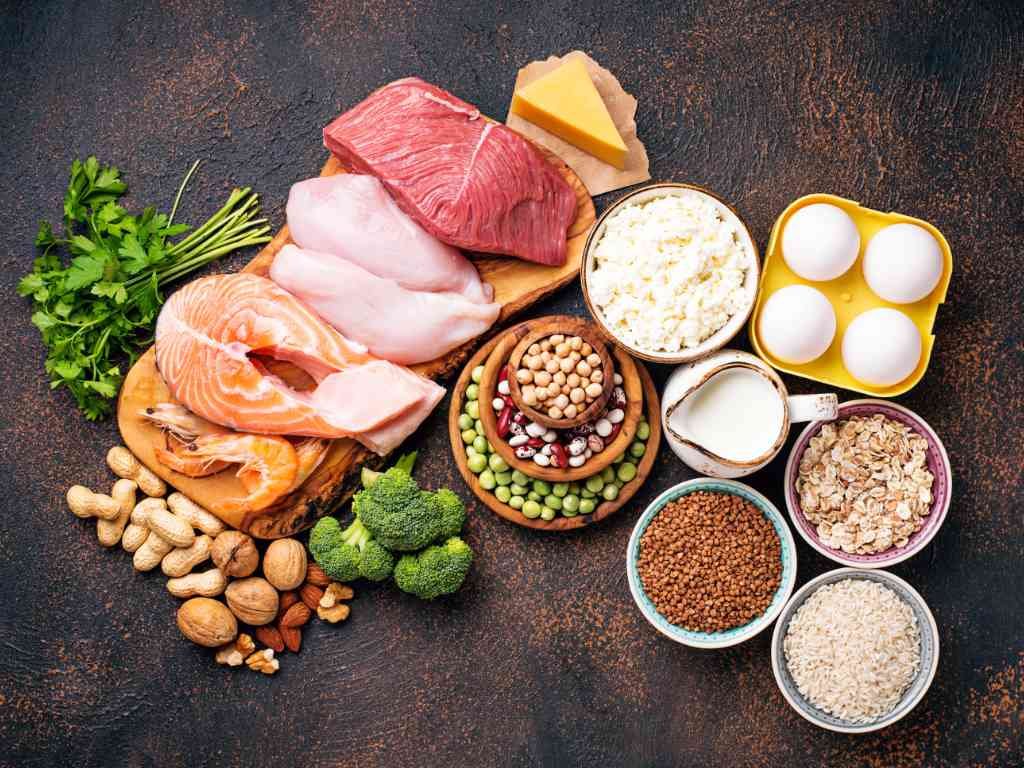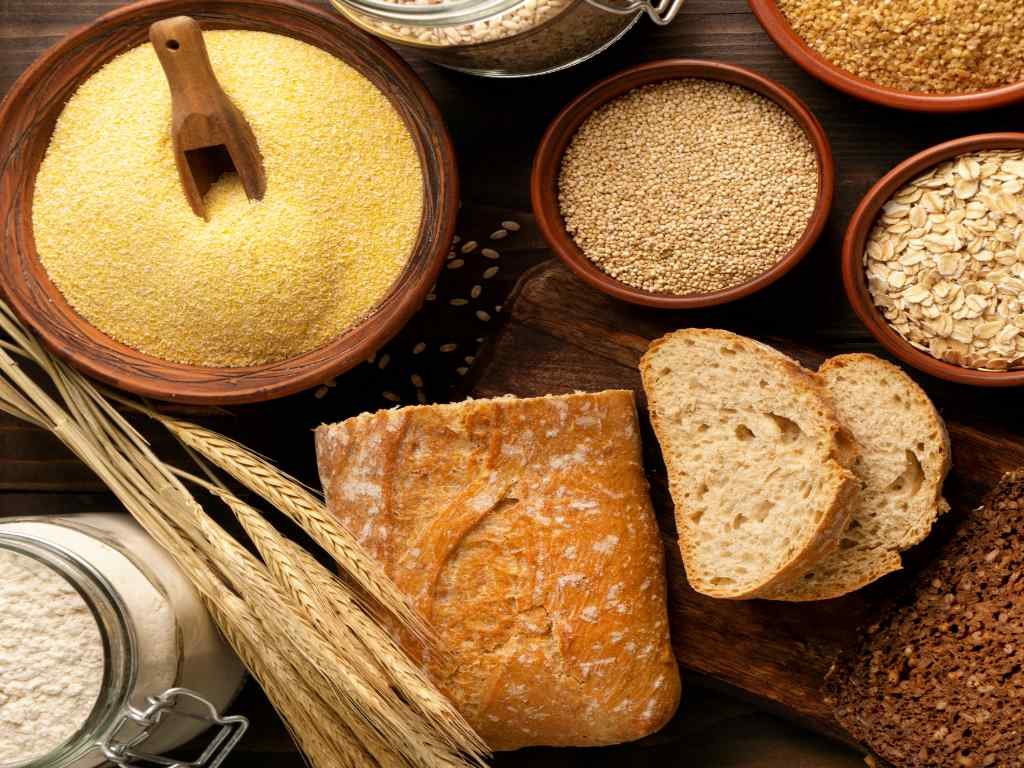Ever wondered why some people seem to effortlessly maintain their weight while others struggle with every bite? The secret often lies in understanding how certain foods can naturally rev up your body’s calorie-burning engine. Metabolism boosting foods aren’t just a trendy concept – they’re scientifically-backed dietary choices that can help your body work more efficiently.
Your metabolism is essentially your body’s 24/7 energy factory, constantly converting food and drinks into usable fuel. While genetics play a role in determining your baseline metabolic rate, the foods you choose can significantly influence how efficiently this internal furnace operates. Let’s dive deep into the world of metabolism-enhancing nutrition and discover which foods can genuinely make a difference in your weight management journey.
What Exactly Are Metabolism Boosting Foods?
Metabolism boosting foods are nutrient-dense options that require more energy for your body to digest, absorb, and process. This phenomenon, known as the thermic effect of food (TEF), can temporarily increase your calorie burn by 5-15% after eating.
Think of it this way: if your body normally burns 100 calories per hour at rest, eating the right foods could bump that up to 110-115 calories. While this might seem modest, these small increases add up significantly over time, especially when combined with sustainable weight loss strategies.
How Does Your Metabolism Actually Work?
Your metabolic rate depends on several interconnected factors that work together like pieces of a complex puzzle. Body composition plays a huge role – people with more muscle mass burn significantly more calories even while sleeping. That’s because muscle tissue is metabolically active, requiring energy just to maintain itself.
Age also affects your metabolic rate, typically slowing down by about 3-5% per decade after age 30. However, this decline isn’t inevitable – the right combination of nutrition and exercise can help maintain a robust metabolism well into your golden years.
Your activity level obviously matters, but here’s what many people don’t realize: your diet composition can influence how efficiently your body burns calories throughout the day. This is where strategic food choices become incredibly powerful tools in your wellness arsenal.
The Science Behind Protein-Rich Metabolism Boosters

Protein stands out as the ultimate metabolism-enhancing macronutrient, and the science behind this is fascinating. When you eat protein-rich foods, your body has to work significantly harder to break them down compared to carbs or fats. This process can increase your metabolic rate by an impressive 15-30%, while carbohydrates only boost it by 5-10%, and fats barely register at 0-3%.
But protein’s benefits extend far beyond just burning extra calories during digestion. High-protein foods help preserve precious muscle mass during weight loss, which is crucial because muscle tissue burns calories around the clock. Additionally, protein promotes satiety more effectively than other macronutrients, helping you naturally eat less without feeling deprived.
Some of the best protein sources for metabolism support include lean meats like chicken breast and turkey, fatty fish rich in omega-3s, eggs (which pack 7 grams of protein each), and plant-based options like beans, lentils, and quinoa. The key is incorporating a variety of these foods throughout your day to maintain steady amino acid levels in your bloodstream.
Lean Meats: Your Metabolism’s Best Friend
Lean meats deserve special attention in any discussion about metabolism boosting foods. The process of breaking down animal proteins requires substantial energy expenditure, literally causing your body to burn extra calories just to digest your meal.
When selecting lean meats, focus on cuts with minimal visible fat. Chicken breast, turkey tenderloin, lean cuts of beef like sirloin, and pork tenderloin are excellent choices. The preparation method matters too – opt for grilling, baking, broiling, or sautéing instead of frying to maintain the metabolic benefits without adding unnecessary calories.
Here’s a practical tip: aim to include a palm-sized portion of lean protein with each meal. This strategy not only supports your metabolism but also helps stabilize blood sugar levels and reduces cravings between meals.
The Power of Legumes in Metabolic Enhancement
Legumes – including beans, lentils, chickpeas, and peas – are metabolic superstars that often don’t get the recognition they deserve. These nutritional powerhouses combine high protein content with substantial fiber, creating a perfect storm for metabolic enhancement.
The fiber in legumes is particularly important because it requires significant energy for your digestive system to process. Your body literally has to work harder to extract nutrients from high-fiber foods, burning extra calories in the process. One cup of cooked lentils provides approximately 18 grams of protein and 16 grams of fiber, making it an ideal choice for metabolic support.
Lentils also supply about 37% of your daily iron needs, which is especially important for women who require more than twice the iron intake of men. Iron deficiency can significantly slow your metabolism, so ensuring adequate intake through foods like legumes is crucial for optimal metabolic function.
Why Low-Fat Dairy Supports Your Metabolism
Low-fat dairy products offer a unique combination of nutrients that support metabolic health in multiple ways. The calcium and vitamin D found in milk, yogurt, and cheese help build and maintain dense muscle mass, which directly correlates with a higher resting metabolic rate.
Research suggests that calcium may also play a role in fat metabolism, potentially helping your body more efficiently break down stored fat for energy. Greek yogurt deserves special mention here – it contains nearly twice the protein of regular yogurt, making it an exceptional choice for metabolic support.
Try incorporating low-fat dairy throughout your day: add milk to your morning oatmeal instead of water, choose Greek yogurt as a snack base, or include cottage cheese in your meal rotation. These simple swaps can significantly boost your daily protein intake while supporting bone health.
Fish and Shellfish: Ocean-Powered Metabolism Boosters

Seafood represents one of the most efficient sources of high-quality protein available, often with the added benefit of beneficial omega-3 fatty acids. Fish like salmon, mackerel, sardines, and tuna provide complete proteins that require significant energy to digest while supporting overall metabolic health.
Shellfish like shrimp, crab, and lobster are particularly impressive from a metabolic standpoint – they’re incredibly lean yet protein-dense. A 3-ounce serving of cooked shrimp contains about 20 grams of protein with minimal fat, making it an ideal choice for those looking to maximize the thermic effect of their meals.
The omega-3 fatty acids in fatty fish may also help regulate hormones involved in metabolism, though more research is needed to fully understand these mechanisms. What we do know is that regular fish consumption as part of a balanced diet supports overall metabolic health.
Spice Things Up: How Chili Peppers Boost Your Burn
Chili peppers contain a compound called capsaicin that can temporarily increase your metabolic rate through a process called thermogenesis. When you eat spicy foods, you might notice your body temperature rising slightly and perhaps even breaking a light sweat – this is your metabolism working harder.
While the effect is temporary, lasting only a few hours after eating, regular consumption of spicy foods may contribute to slight improvements in metabolic rate over time. Studies suggest that capsaicin might increase calorie burning for several hours post-meal.
Incorporating chili peppers into your meals is easier than you might think. Add fresh jalapeños to salads, include cayenne pepper in your cooking, or try hot sauce as a low-calorie flavor enhancer. Even small amounts can provide benefits, so start slowly if you’re not accustomed to spicy foods.
Green Tea and Coffee: Liquid Metabolism Boosters
While not technically foods, beverages like green tea and coffee deserve mention for their metabolic benefits. Green tea contains catechins, particularly EGCG (epigallocatechin gallate), which may help increase fat oxidation and boost metabolic rate by 5%.
Coffee’s caffeine content can temporarily increase your metabolic rate by 3-11%, with higher doses generally producing greater effects. However, tolerance develops over time, so occasional coffee drinkers may see more pronounced benefits than daily consumers.
The key with both beverages is consuming them without added sugars, syrups, or high-calorie creamers that could negate their metabolic benefits. Green tea can be enjoyed hot or cold throughout the day, while coffee is best consumed earlier to avoid interfering with sleep quality.
Cruciferous Vegetables: Low-Calorie, High-Impact Foods
Vegetables like broccoli, cauliflower, Brussels sprouts, and cabbage require more energy to digest than they contain – creating a negative calorie effect that supports weight management. These nutrient-dense foods are packed with fiber, vitamins, and minerals while being naturally low in calories.
Broccoli, in particular, is a metabolism-supporting superstar. It’s rich in vitamin C, which supports iron absorption (important for metabolic function), and contains compounds that may help regulate hormones involved in metabolism. The high water and fiber content also promote satiety, helping you feel satisfied with fewer calories.
Try incorporating cruciferous vegetables into every meal: add spinach to your morning smoothie, include broccoli in your lunch stir-fry, or enjoy roasted Brussels sprouts as a dinner side. These versatile vegetables can be prepared in countless ways to keep your meals interesting while supporting your metabolic goals.
Whole Grains vs. Refined Carbs: Making the Right Choice

Not all carbohydrates are created equal when it comes to metabolic impact. Whole grains like quinoa, brown rice, oats, and barley require significantly more energy to digest compared to their refined counterparts. This increased energy expenditure, combined with their fiber content, makes whole grains valuable additions to a metabolism-supporting diet.
The processing involved in creating white bread, white rice, and other refined grains removes most of the fiber and nutrients, making these foods much easier for your body to digest. While this might seem like a good thing, it actually means your metabolism doesn’t have to work as hard, reducing the overall calorie burn from eating.
When choosing grains, look for options that list whole grains as the first ingredient. Steel-cut oats, quinoa, and wild rice are excellent choices that provide sustained energy while supporting your metabolic goals.
The Truth About Metabolism-Boosting Supplements
While whole foods should form the foundation of any metabolism-supporting strategy, some people wonder about supplements. The reality is that most fat burner supplements promise more than they can deliver, and many contain stimulants that can cause unwanted side effects.
Food-based approaches to metabolism support are generally safer and more sustainable than supplement strategies. However, certain nutrients like iron, B vitamins, and vitamin D play crucial roles in metabolic function, so addressing deficiencies through targeted supplementation may be beneficial for some individuals.
If you’re considering supplements, it’s best to consult with a healthcare provider who can assess your individual needs and recommend evidence-based options that complement your dietary approach.
Creating Synergy: Combining Foods for Maximum Impact
The most effective approach to supporting your metabolism involves combining multiple beneficial foods throughout the day rather than relying on any single “superfood.” A breakfast that includes Greek yogurt (protein), berries (fiber and antioxidants), and a sprinkle of nuts (healthy fats) creates metabolic synergy that’s greater than the sum of its parts.
Meal timing also plays a role in optimizing metabolic function. Eating protein-rich foods earlier in the day can help maintain steady energy levels and support muscle protein synthesis. Consider incorporating intermittent fasting strategies that align with your natural circadian rhythms for additional metabolic benefits.
The key is creating sustainable eating patterns that you can maintain long-term. Dramatic dietary changes that can’t be sustained will ultimately be less effective than modest improvements that become permanent lifestyle changes.
Common Myths About Metabolism and Food
Let’s address some persistent myths about metabolism boosting foods. First, no single food can dramatically transform your metabolic rate overnight. While certain foods do provide measurable benefits, the effects are generally modest and work best as part of a comprehensive approach.
Second, “negative calorie” foods – those that supposedly burn more calories to digest than they contain – are largely a myth. While some foods do require significant energy for digestion, the calorie burn rarely exceeds the food’s caloric content.
Third, eating small, frequent meals doesn’t significantly boost metabolism compared to eating fewer, larger meals with the same total calorie content. What matters more is the overall quality and composition of your food choices rather than the specific timing or frequency.
Frequently Asked Questions
How much can metabolism boosting foods actually increase my calorie burn?
Metabolism boosting foods can increase your calorie burn by 5-30% temporarily after eating, depending on the food type. Protein-rich foods provide the highest thermic effect, while the overall daily impact is typically modest but meaningful when sustained over time.
Can I lose weight just by eating metabolism boosting foods?
While metabolism boosting foods support weight loss efforts, they work best when combined with appropriate calorie control and regular physical activity. These foods enhance your body’s natural calorie-burning processes but aren’t magic solutions for weight loss.
Are there any side effects to eating metabolism boosting foods?
Most metabolism boosting foods are simply nutritious whole foods with minimal side effects. Spicy foods might cause digestive discomfort in sensitive individuals, and dramatically increasing fiber intake should be done gradually to avoid bloating or gas.
How long does it take to see results from metabolism boosting foods?
The thermic effect of food is immediate but temporary, lasting 2-6 hours after eating. Long-term metabolic improvements from consistently eating these foods may become noticeable within 4-8 weeks when combined with other healthy lifestyle changes.
Practical Implementation Strategies
Implementing metabolism boosting foods into your daily routine doesn’t require a complete dietary overhaul. Start by making simple swaps: choose Greek yogurt over regular yogurt, opt for lean proteins over processed meats, and include a serving of cruciferous vegetables with dinner.
Meal prep can be incredibly helpful for ensuring you have metabolism-supporting options readily available. Batch cook lean proteins, pre-cut vegetables, and prepare grab-and-go snacks that align with your metabolic goals.
Remember that consistency matters more than perfection. Aim to include metabolism boosting foods in 80% of your meals rather than stressing about every single bite. This sustainable approach will serve you better in the long run than attempting dramatic changes that can’t be maintained.
Beyond Food: Supporting Your Metabolic Health
While food choices play a crucial role in metabolic health, they work best when combined with other lifestyle factors. Regular strength training helps build and maintain muscle mass, which directly impacts your resting metabolic rate.
Adequate sleep is also crucial – sleep deprivation can significantly slow your metabolism and disrupt hormones that regulate hunger and satiety. Aim for 7-9 hours of quality sleep nightly to support optimal metabolic function.
Stress management is another often-overlooked factor in metabolic health. Chronic stress can lead to elevated cortisol levels, which may negatively impact metabolism and promote fat storage, particularly around the midsection.
The journey to optimal metabolic health isn’t about finding the perfect combination of foods or following the latest dietary trend. It’s about making informed choices, staying consistent with beneficial habits, and understanding that small improvements compound over time to create significant results.
By incorporating the metabolism boosting foods discussed in this guide while maintaining realistic expectations, you’ll be well-equipped to support your body’s natural calorie-burning processes. Remember, the most effective metabolism-supporting strategy is one that fits seamlessly into your lifestyle and can be maintained for years to come.


